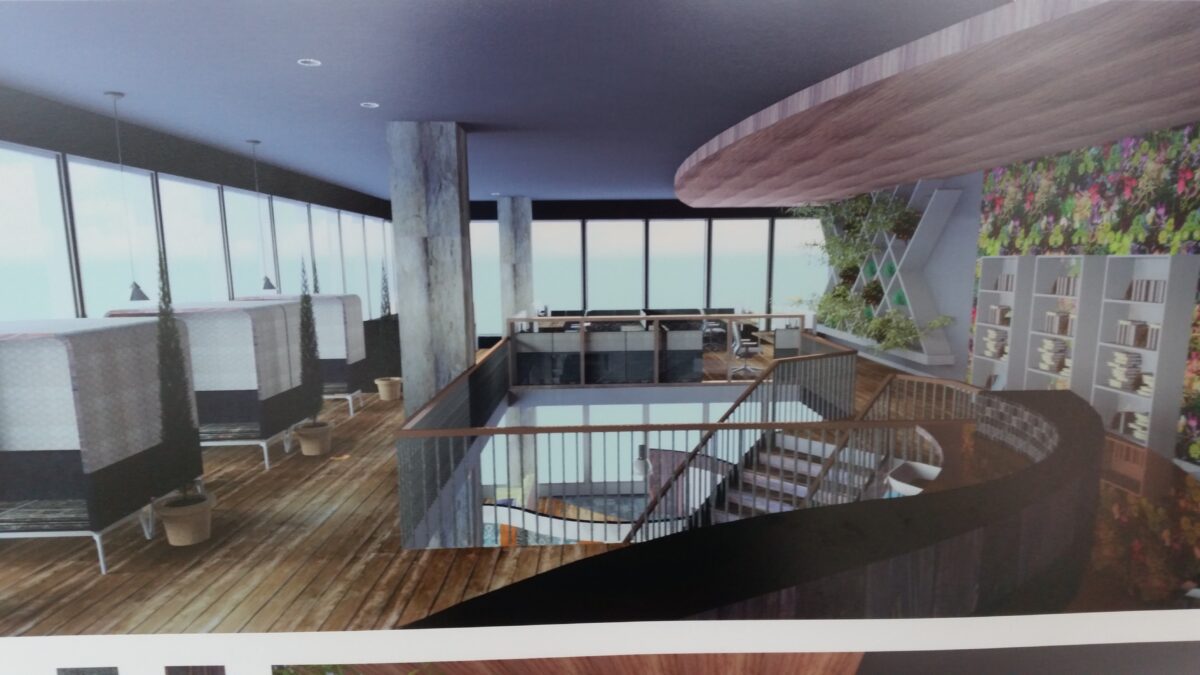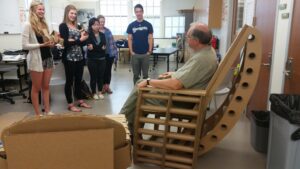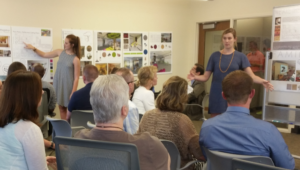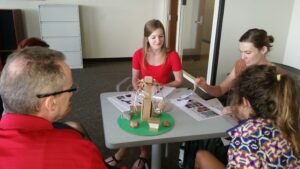
Forget about research papers and final exams. Students in a University of Wisconsin-Madison design course demonstrated their mastery of the material with a real-world project: transforming a campus space in need of a makeover. And in three weeks, no less.

For this ambitious assignment, the Department of Design Studies in UW-Madison’s School of Human Ecology partnered with the Office of the Registrar, which sought a more functional and engaging environment. Departments are isolated from one another, and employees tend to stay in their separate rooms. The office is too quiet and closed-off, with lots of wasted space—not exactly a place conducive to collaboration.
“Our work at the Office of the Registrar has evolved immensely over the years, and it requires us to work together differently,” says University Registrar Scott Owczarek. “So we approached the School of Human Ecology to take a look at our space.”

Enter 15 students from the summer course Design Studies 501, an immersion in the design-thinking process. It was part of UW-Madison’s Summer Term, which serves 13,000 students each year with nearly 1,000 courses.
Faculty associate Lesley Sager split the students into five groups to rework a multipurpose part of the office, offer recommendations for the front-desk area, and design custom cardboard furniture.
A sense of community

Design thinking has five steps: empathize, define, ideate, prototype, and test. In this case, the students started with two full days of observing, interviewing, and surveying staff members at the Office of the Registrar.
“When it comes to the design-thinking process, observing how the staff members currently use the space can be just as important as the staff interviews,” says student Robyn Connors. “We integrate these observations into our design so we can create a space that fits what the staff needs, even if they’re not sure how to verbalize it.”
Based on their observations, the design students brainstormed ideas, created prototypes, tested them, and finally selected the ones that would work best.

To encourage a sense of community, they envisioned a flexible, multipurpose space. It includes stackable furniture, whiteboards that can move 360 degrees, lounge chairs next to windows, drop-down desks, a coffee bar, and walls and tables that employees can write on.
To ensure that people can still have privacy when necessary, they designed two permanent spaces amid the flexible ones. They also added a strategically placed phone booth for private calls.
In a fanciful touch, the students incorporated a nature theme to establish a sense of calm. It features natural light, hanging plants, lanterns, and felt “rocks” to simulate the outdoors. They also turned a column into a tree with acoustical felt leaves and branches.

‘Amazingly creative’
Design Studies 501 is an example of an innovative summer course that helps students progress through their degree and participate in a life-changing experience. Three of them, along with Owczarek, did a presentation on the project at a July conference of the American Association of Collegiate Registrars and Admissions Officers in Austin, Texas.
“One of the things that stood out to me was the speed at which the learning was taking place, and the excitement of the students to have this real-world example instead of a made-up example,” says Owczarek. “They were amazingly creative in their design prototypes.”
In the course of their work with the Office of the Registrar, the students came to appreciate Sager’s design-thinking approach.
“It’s an interesting way to learn how to accommodate people,” says Krista Neerdaels. “We got an idea of what people really need, not necessarily what we wanted them to want.”